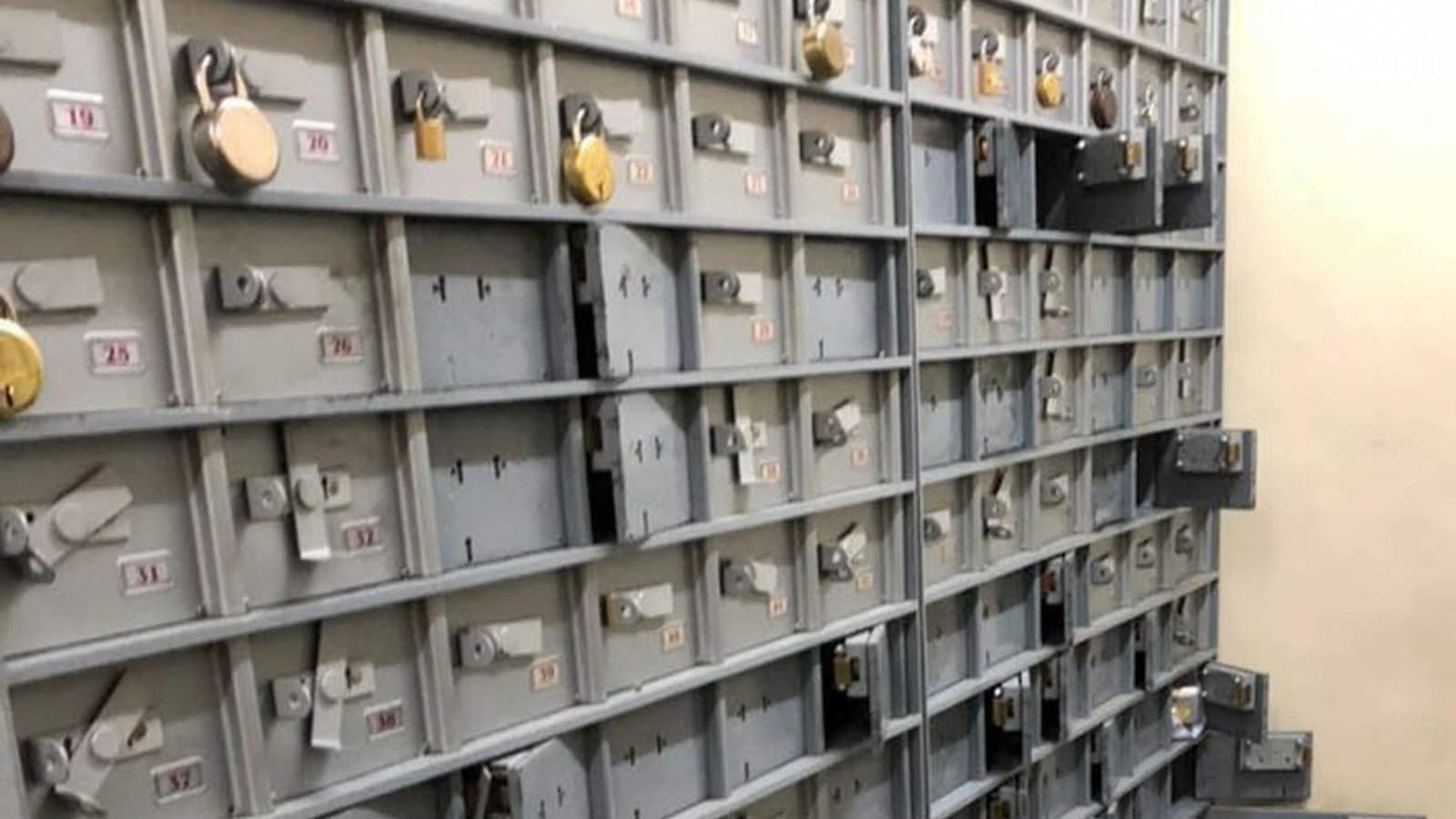Last Updated:June 02, 2025, 17:37 IST
Bank lockers use a double-lock system where one key is with the customer and the other, a master key, is held by the bank to ensure shared access and enhanced security
A locker agreement is signed between the customer and the bank, outlining the terms and conditions of use. (Representative/PTI)
A woman in Bengaluru was left shocked after she initially believed that 145 grams of gold and diamond jewellery stored in her State Bank of India (SBI) locker had gone missing. She filed a complaint with the bank and sought compensation. However, according to reports, it later emerged that the jewellery she claimed was missing had been inadvertently overlooked, as it was stored deep within the locker.
The case has sparked concerns over the security of bank lockers and the extent of a bank’s responsibility in such situations.
Laws And Rules Related To Bank Locker Facilities
Locker facilities in India operate under the guidelines of the Reserve Bank of India (RBI) and the respective rules of individual banks. In 2021, the RBI issued updated regulations on this matter.
Banks are not permitted to keep records of the contents stored in a customer’s locker, nor do they have the right to inquire about what is kept inside. However, in cases of tampering or theft, the bank is held accountable. If any loss occurs due to the bank’s negligence or fault, the bank is liable to compensate the customer for the stolen contents.
How Much Compensation Will The Bank Provide?
According to the Reserve Bank of India, in the event of loss due to the bank’s negligence, the bank is liable to pay compensation of up to 100 times the annual locker rent. For example, if the annual locker rent is Rs 3,000, the maximum compensation the bank can offer is Rs 3,00,000.
When The Bank Will Not Pay Compensation
If theft from a locker occurs and the bank’s fault or negligence is not proven, it is not held responsible. The bank investigates such incidents, and if no negligence is found on its part, it is not liable to pay compensation.
In simple terms, the bank is responsible—and will pay compensation—only if the loss is due to its negligence, a security breach or a technical fault. However, if the loss occurs due to the customer’s own mistake—such as misplacing the locker key—the bank is not accountable.
What To Do If Your Bank Locker Is Tampered With?
- An FIR should be filed with the police promptly.
- A written complaint must be submitted to the bank.
- The bank should be requested to provide CCTV footage of the locker area.
- If the bank’s response is unsatisfactory, the complaint can be escalated to the RBI Banking Ombudsman.
General Rules Of Bank Lockers
- The customer is solely responsible for the contents of the locker; the bank neither knows nor inquires about what is stored inside.
- A locker agreement is signed between the customer and the bank, outlining the terms and conditions of use.
Who Has The Keys To The Locker?
- Bank lockers operate on a double-lock system: one key is held by the customer, and the other is a master key retained by the bank.
- While responsibility is shared, the bank is expected to ensure the overall security of the locker facility.
What Is the Annual Rent of a Bank Locker?
The annual rent of a bank locker in India depends primarily on two factors:
Size Of The Locker: Lockers are generally available in four categories: Small, Medium, Large, and Extra Large.
Location Of The Bank Branch: The rent varies depending on whether the branch is in a metro, urban, semi-urban, or rural area.
Estimated SBI Locker Rent As Of 2025 (Excluding GST)
Small Locker:
- Metro/City branches: Rs 2,000 to Rs 3,000
- Semi-urban branches: Rs 1,500 to Rs 2,500
- Rural branches: Rs 1,000 to Rs 2,000
Medium Locker:
- Metro/City: Rs 4,000 to Rs 6,000
- Semi-urban: Rs 3,000 to Rs 5,000
- Rural: Rs 2,500 to Rs 4,000
Large Locker:
- Metro/City: Rs 8,000 to Rs 12,000
- Semi-urban: Rs 6,000 to Rs 10,000
- Rural: Rs 5,000 to Rs 8,000
Extra Large Locker:
- Metro/City: Rs 14,000 to Rs 20,000
- Semi-urban: Rs 10,000 to Rs 16,000
- Rural: Rs 8,000 to Rs 12,000
Additional Points To Note:
- An 18% GST is applicable on the locker rent.
- The actual rent may slightly vary from branch to branch or city to city.
- Locker rent is collected once a year in advance.
- Payment can be made via bank account debit, cash, or cheque.
- If the rent is not paid on time, a late fee may be charged by the bank.
What Happens In Case Of Fire Or Flood?
As per the Reserve Bank of India’s 2021 guidelines, if the locker vault is damaged due to natural disasters like fire or flood, and the bank had already put in place all necessary safety measures—such as functional fire alarms, waterproof vaults, and relevant insurance—the customer is not entitled to compensation for any loss.
However, if the damage is found to have occurred due to the negligence of the bank—for instance, if fire alarms were non-functional or the vault was not properly maintained—the bank will be held responsible and will be required to compensate the customer for the loss.
Are The Items Kept In A Bank Locker Insured?
No, banks do not insure the contents of a locker. The responsibility for the items kept inside lies entirely with the customer.
If a customer wishes, they can purchase jewellery or valuables insurance separately from a private insurance company. Such policies may also cover items stored in a bank locker.
However, it is not mandatory for banks to permit or facilitate insurance for locker contents. Banks like SBI, ICICI, and HDFC charge rent for locker use but do not include insurance for the stored items as part of the service.
How Many Times Can A Bank Locker Be Accessed?
According to the rules of SBI and most other banks, customers are allowed a fixed number of free visits per year to access their bank lockers. Beyond this limit, a charge is levied for each additional visit.
Typically, 12 free visits are permitted annually, regardless of locker size. For any visit beyond this limit, banks charge an additional fee of Rs 100 plus GST per visit. These rules may vary slightly depending on the bank’s policy and branch location.
Can Banks Demand A Large Fixed Deposit For Allotting A Locker?
According to the Reserve Bank of India’s 2021 circular, banks are not allowed to impose a condition of making a large fixed deposit (FD) or maintaining a high balance as a prerequisite for allotting a locker.
No bank can ask for an FD of Rs 5 lakh, Rs 10 lakh or more as a condition to provide a locker. However, an FD can be sought only in one specific case—to cover potential expenses in case the customer defaults on locker rent and the bank needs to break open the locker and recover dues. Even in such cases, the FD amount should be just enough to cover the rent and incidental charges, not an arbitrary high sum.
- First Published:
#Jewellery #Missing #Locker #Bank #Held #Liable #Explained



